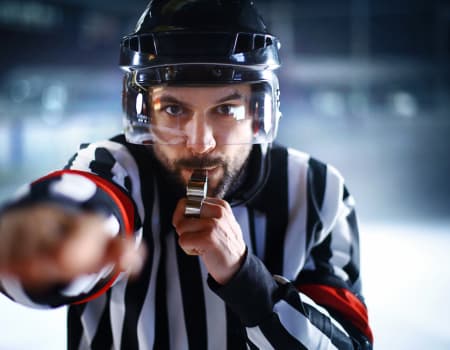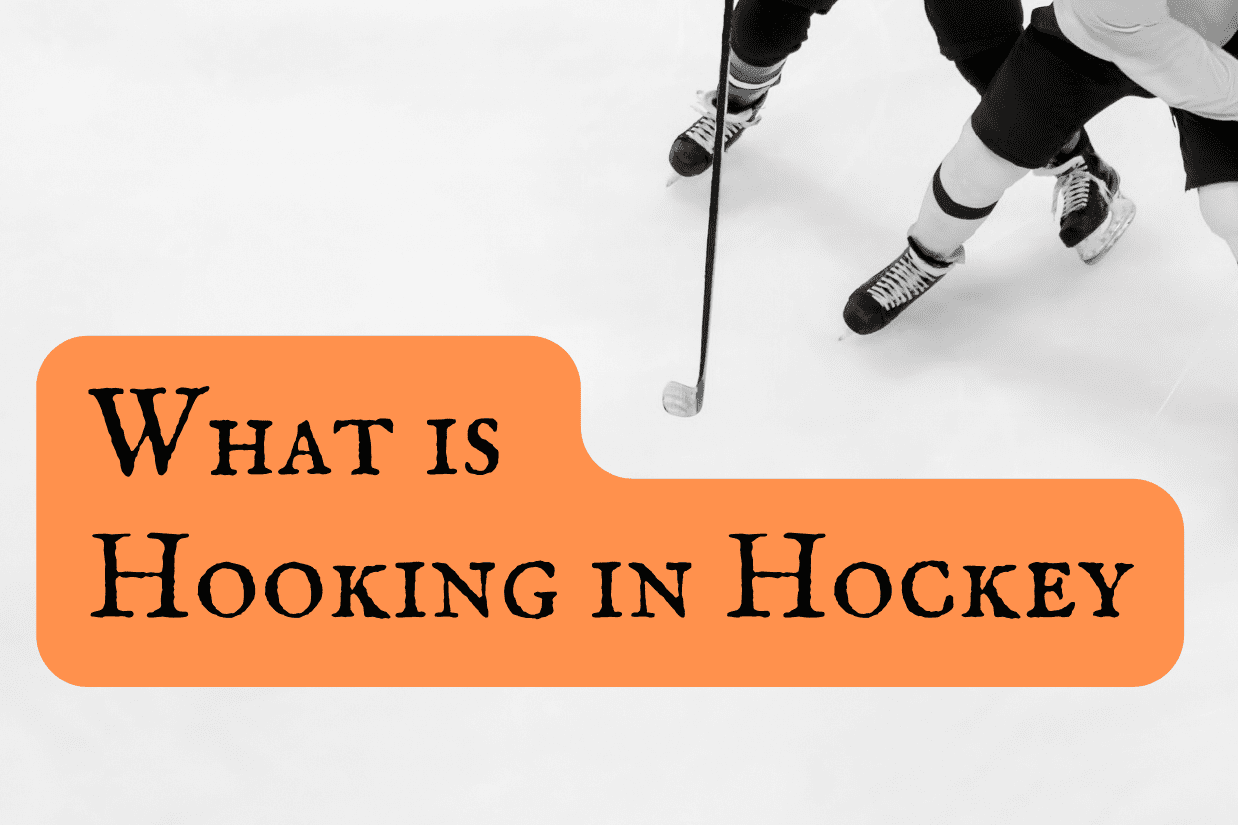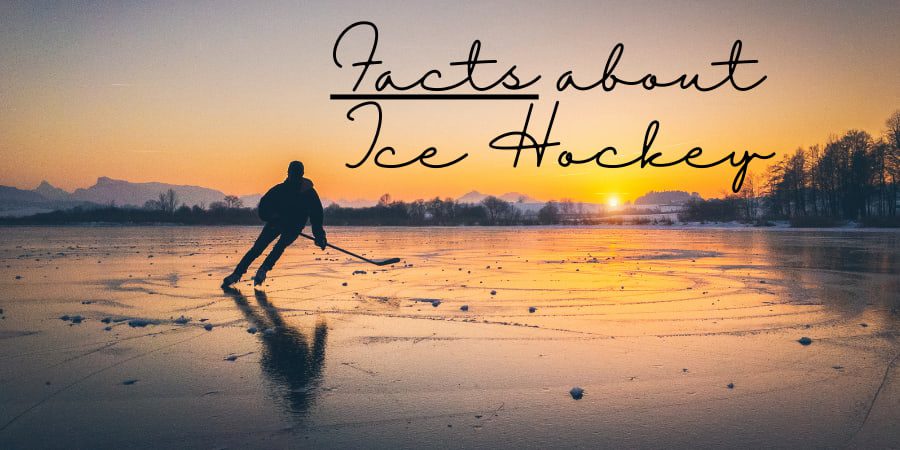What is Hooking in Hockey?
Hooking is an infraction in hockey where a player uses their stick to restrain or slow down another player’s progress. Learn more about the meaning and penalties associated with Hooking.
What Is Hooking in Hockey?
Hooking is a type of infraction in ice hockey which occurs when a player wraps his or her stick around an opponent in order to impede their progress or block their shot. This can be done with either arm or leg, but the Stick is the main weapon used to commit this infraction.
A player who is suspected of hooking will have his or her Stick placed under the armpit and raised in the air by the Referee, signaling that a penalty has been called. Hooking can be either a minor or major infraction, depending on the severity of the infraction.
There are two types of hooking penalties: Minor and Major.
A minor hooking penalty results in a two-minute power play for the opposing team, while a major hooking penalty results in a five-minute power play.
If a goal is scored during a power play, the penalized team will return to full strength. However, if the opposing team scores a goal during a major hooking penalty, the penalized team will remain down a player for the duration of the penalty.
Hooking is generally seen as a way to slow down an opponent who has control of the puck, as it can prevent them from making a clean pass or shot. It can also be used to trip an opponent, which can lead to them losing control of the puck. In more severe cases, hooks can be used to injure an opponent, which is why they are penalized so severely.
Definition of Hooking in Hockey
In the sport of hockey, hooking is when a player uses his or her stick to impede the progress of another player. This is usually done by placing the blade of the stick in front of the other player’s body, which can then be used to slow them down or push them off balance. If a player is found to be hooking, they will be penalized with a free shot.

There are a few different ways that a player can hook another player. The most common is to grab hold of their stick with one hand and then use the other hand to hold the other player’s body. This can be done in a number of ways, such as grabbing their jersey, arm, or even their hair.
Another way to hook is to place the blade of the stick between the legs of the other player, which can then be used to trip them up or slow them down.
While hooking can be used as a way to slow down another player or stop them from getting past you, it can also be used as a way to take the puck from them. This is done by placing the blade of your stick on the ice and then using it to lift the puck up and away from the other player. This can be an effective way to take the puck from a player who is trying to control it, but it can also be dangerous if not done correctly.
If a player is found to be hooking another player, they will be penalized with a free shot. This is usually a shot on goal from the spot where the infraction occurred. If the hooking occurred in the defensive zone, the free shot will be taken from outside of the zone. If the hooking occurred in the offensive zone, the free shot will be taken from inside the zone. If the free shot is successful, the team will be awarded a goal.
While hooking can be an effective way to slow down another player or take the puck from them, it can also be dangerous if not done correctly. This is why it is important to know the rules and regulations surrounding this particular infraction.
Types of Hooking Penalties
There are two types of hooking penalties: minor and major.
A minor hooking penalty is when a player hooks an opposing player in a way that doesn’t cause serious injury and is only a 2-minute penalty.
A major hooking penalty is when a player hooks an opposing player in a way that does cause serious injury and is a 5-minute penalty.
If the player who is hooked suffers a major injury, the penalties can be even more severe. In addition to the 5-minute major penalty, the player who committed the infraction may be given a game misconduct penalty, which results in his ejection from the game.
Impact of Hooking on the Game
In today’s game, there is a lot of emphasis on speed and skill. Players are always trying to find new ways to create space for themselves and their teammates, and one of the most popular ways to do this is by hooking opponents. Hooking is when a player uses their stick to impede the progress of an opponent, and it can be a very effective way to slow down the other team’s attack. However, it can also be a very dangerous play, and it is often penalized.
Hooking penalties are usually assessed as a minor infraction, meaning that the offending player will spend two minutes in the penalty box.
However, if a player Hooks an opponent in a dangerous manner, they may be given a major penalty, which is a five-minute sentence. In either case, the team that was hooked will be given a power play, meaning they will have an extra man on the ice for the duration of the penalty.
While Hooking can be an effective way to slow down the other team, it can also lead to some dangerous plays. In particular, players who are hooked from behind can be driven into the boards, which can lead to serious injuries. As a result, Hooking is often penalized heavily in today’s game.
Effects of Hooking on the Player Committing the Infraction
Hooking is considered a minor penalty, but it can still have a major impact on the game. For one, it gives the opposing team a power play, as the offending player must sit in the penalty box for two minutes. This can be costly, especially if the other team scores while the player is serving their penalty.
In addition, hooking can be a dangerous play. When a player is hooked from behind, they can lose balance and fall, which can lead to serious injuries. Even if the hooking infraction doesn’t result in an injury, it can still be a physical play that can wear down a player over the course of a game or a season.
So, what can hockey players do to avoid hooking penalties? For starters, they need to be aware of where their stick is at all times.
Additionally, they need to be aware of the positioning of their opponents and make sure not to put themselves in a position where they can be easily hooked.
Finally, players need to have self-control. When emotions are running high, it can be easy to take a hooking penalty in retaliation for another player’s infraction. However, this will only end up costing your team, so it’s important to keep your cool and avoid hooking penalties altogether.

Examples of Hooking in Hockey
When most people think of hooking in hockey, they think of a player using their stick to slow down or impede the progress of an opponent who is carrying the puck. However, there are actually several different ways that a player can hook an opponent. Let’s take a look at some examples.
1. Perhaps the most common way that hooking is called in hockey is when a player uses his or her stick to slow down or impede the progress of an opponent who is carrying the puck. This is usually done by placing the stick in front of the opponent’s body or legs and then using the body or leg to push the stick in order to slow the player down.
2. Hooking can also be called when a player uses his or her stick to lift the stick of an opponent who is attempting to shoot the puck. This can be done in order to block the shot or to make it difficult for the opponent to get a good shot off.
3. Another way that hooking can be called is when a player reaches out with their stick and makes contact with an opponent who is not in possession of the puck. This is usually done in order to slow down or block the progress of the opponent.
Oftentimes, this type of hooking will result in a penalty shot being awarded to the opposing team.
How Officials View Hooking
Some officials view hooking as a minor infraction that is not worth calling unless it is done in a dangerous or obstructive manner.
Other officials view it as a more serious penalty and will call it more often, even if it is not done in a dangerous way. This can lead to players being penalty-prone, as they are more likely to be called for hooking than other players.
The way that hooking is viewed by officials can have a major impact on the game. If officials are more lenient with hooking, then players will be more likely to use it as a tactic. This can make the game more physical and dangerous, as players will be more inclined to slash or hit opponents with their sticks. If officials are more strict with hooking, then players will be less likely to use it, and the game will be less physical.
Ultimately, it is up to the officials to decide how they want to view hooking. Some officials may be more lenient, while others may be more strict. This can have a major impact on the game and on the safety of the players.
Strictness of Hooking Penalties Vary Between Leagues

In professional hockey, there are two main types of penalties: major and minor. A minor penalty is two minutes in length and is served by the offending player in the penalty box. A major penalty is five minutes in length and is also served by the offending player in the penalty box, however, a major penalty also results in the player’s team being short-handed for the duration of the penalty.
Hooking is a minor penalty in the National Hockey League (NHL), but it is a major penalty/game misconduct in the American Hockey League (AHL). The strictness of the penalty varies between the two leagues, but the overall flow of the game remains the same.
In the NHL, a player can be called for hooking if he uses his stick to hold an opponent’s stick, body, or uniform in order to impede his progress.
In the AHL, a player can be called for hooking if he impedes an opponent’s progress with his stick, body, or skates.
Making contact with an opponent’s body with one’s stick is not necessarily a penalty in either league. It is only a penalty if the contact is deemed to be excessive or if it is done in a way that is deemed to be dangerous.
The overall strictness of penalties varies between the NHL and the AHL, but the overall flow of the game remains the same. In both leagues, players are penalized for actions that are deemed to be dangerous or excessive.

How to Avoid Getting Penalized for Hooking in Hockey
Hooking is a common infraction in hockey that is called when a player uses their stick to hook or impede the progress of an opponent. It is important to avoid getting penalized for hooking, as it can often result in a power play opportunity for the opposing team. Here are some tips on how to avoid getting penalized for hooking:
1. Use your stick to deflect the puck, not to hook the player. If you are using your stick to hook the player, you are more likely to get penalized. Instead, use your stick to deflect the puck away from the player.
2. Do not make stick contact with the player. If you do make contact with the player, it is more likely that you will be called for a hooking penalty.
3. Be careful when you are using your stick around other players. If you are too aggressive with your stick, you may end up hitting another player and be called for a penalty.
4. If you are going to hook a player, make sure that you do it away from the puck. If you are close to the puck, you are more likely to be called for a penalty.
5. Make sure that you do not impede the progress of the player. If you are hooking a player and they are still able to move freely, you are less likely to be penalized.
By following these tips, you can avoid getting penalized for hooking in hockey.
References:
“Rule 623 Hooking, Section 6 Playing Rules”. USA Hockey Rule Book; https://www.usahockeyrulebook.com/page/show/1084674-rule-623-hooking.
“American Hockey League 2022-2023 Rulebook”. chrome-extension://efaidnbmnnnibpcajpcglclefindmkaj/https://www.amerks.com/assets/doc/Rule-Book-2022-23-4815155689.pdf



